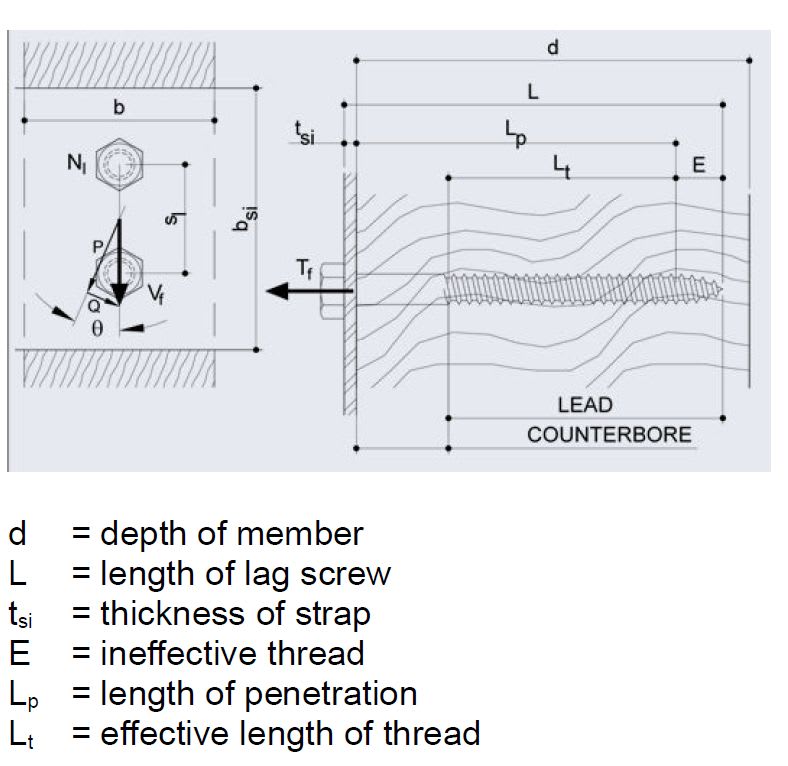This is for Canadian engineers that use CSA O86 mostly.
I’m writing an SMath program to design lag screws. I don’t usually design in wood and have a couple of questions. I’m using the Canadian Wood Code CSA O86-14. For withdrawal it appears that the effective length of thread is used. This makes sense. For lateral loads, I cannot determine if the length is based on the effective length of thread or the length of penetration is used. The description of the variables is a ‘little fuzzy’. Any clarification would be appreciated. Thanks in advance.

Rather than think climate change and the corona virus as science, think of it as the wrath of God. Feel any better?
-Dik
I’m writing an SMath program to design lag screws. I don’t usually design in wood and have a couple of questions. I’m using the Canadian Wood Code CSA O86-14. For withdrawal it appears that the effective length of thread is used. This makes sense. For lateral loads, I cannot determine if the length is based on the effective length of thread or the length of penetration is used. The description of the variables is a ‘little fuzzy’. Any clarification would be appreciated. Thanks in advance.

Rather than think climate change and the corona virus as science, think of it as the wrath of God. Feel any better?
-Dik
